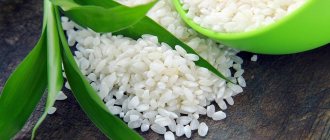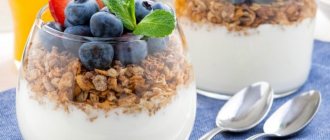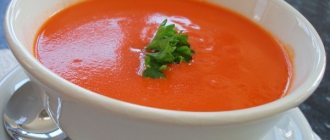In 1847, Joseph Storrs Fry, the head of the family candy factory, produced the first chocolate bar. Convenient shape, compactness and at the same time sufficient volume - the product quickly became widespread and became an alternative to the usual and already boring tiles. In 1900, Swiss physician and nutritionist Maximilian Oskar Bircher-Benner made an equally important discovery. By replacing cocoa beans with cereals and adding some fruits and berries to the composition, he received a grain bar, which he recommended to use for the purpose of losing weight and normalizing digestion.
More than 100 years have passed since then, and the fitness bars created by Benner are at the peak of popularity. Hundreds of sports and diet nutrition brands produce these products in a variety of flavors. They are popular with bodybuilders and those losing weight, students during training sessions and employees holding responsible positions. However, recently alarm bells have begun to appear. The number of negative reviews has increased, including from specialists. So is it worth it or not to reach out to the store for another portion of phyto-yummy?
Benefits and harms
Benefit
Nutritionists and fitness trainers note that such bars are quite healthy. First of all, for those who are actively involved in sports, monitor their weight, and perfect their ideal figure. Secondly, for weight loss, if a diet is followed in parallel (or against the background of a decrease in daily calorie intake) and there are at least 2-3 workouts per week. Thirdly, in general they are much healthier for health than chocolate.
Undoubted benefits:
- supply a sufficient amount of useful substances, replenishing the body’s building resources;
- control energy balance, giving vigor and increasing endurance;
- improving metabolism, triggering fat burning and activating carbohydrate metabolism;
- strengthen muscles, help them recover after training, protect them from splitting;
- provide long-term satiety, help fight hunger, preventing you from losing weight while losing weight.
Attention, small nuance! Only high-quality fitness bars have such beneficial properties. Unfortunately, there are many fakes on the modern market, the composition of which leaves much to be desired. They are more harmful.
Harm
Calorie content
Still, they are quite high in calories. Some contain an excess of carbohydrates. Lots of sweets (chocolate, sweeteners and even refined sugar).
Harmful additives
Additional ingredients in the form of maltitol syrup, palm oil, hydrogenated fat, and food additives are far from healthy. May cause allergies or upset digestion.
Deception
Official data often does not correspond to real data. The packaging shows “beautiful” KBZHU numbers that fit the norm and seduce athletes and those losing weight with their meanings. However, often (almost 50%) they do not reflect the actual nutritional value. Calories, carbohydrates and fats are underestimated, and proteins are overestimated. This is indicated by almost all independent laboratory studies conducted in this segment. Such deception does not result in weight loss, but in the opposite process - weight gain.
Errors in use
You cannot replace an entire meal with a fitness bar, even if you are losing weight, not to mention those who engage in intense physical activity. This is fraught with serious digestive and metabolic disorders. Losing weight can result in uncontrolled weight gain. Requires compulsory sports activities.
On a note. The disadvantages include inflated prices. For example, protein bars are much more expensive than sports nutrition in powder or capsules.
Production
Modern production of fitness bars is represented by two technologies.
"Dry"
- Washing of raw materials.
- Clearing debris.
- Drying.
- Grind until smooth.
- Mixing ingredients.
- Cooking at 120°.
- Cooling to 40°.
- Forming into sheets.
- Cooling down.
- Slicing.
- Package.
"Wet"
- Washing of raw materials.
- Clearing debris.
- Grind until smooth.
- Mixing ingredients.
- Laying the wet mixture in sheets into a molding machine.
- Drying in a vacuum oven at 70°.
- Slicing.
- Glazing.
- Package.
If you want to get the most out of a fitness bar, you should give preference to those produced using wet technology. There is much less heat treatment, so most important nutrients retain their value.
Compound
In the composition you can find:
- whole grains: with oatmeal, buckwheat, corn, wheat (fiber)
- nuts (healthy fats);
- flax seeds, sunflower seeds, chia seeds, sesame seeds, quinoa seeds (healthy fats)
- dried fruits, fruits, berries;
- sweeteners: sweeteners, honey, maltodextrin, corn and fruit syrups;
- vitamins: ascorbic acid, niacin, pyridoxine, biotin;
- L-Carnitine
- microelements;
- nutritional supplements.
When choosing, you should focus on which components are more numerous. Cereals and fruits are considered the most useful for both sports and weight loss. But do not forget that these are carbohydrates, so the calorie content is quite high.
Be careful with sweeteners. Many of them are no less harmful to health and figure than sugar.
Nuts and seeds are, without a doubt, beneficial in every way. But if there is an excess, they will interfere with weight loss and lead to the opposite effect. So keep an eye on the content percentage.
About Nestlé products
It has been producing high quality products for over 100 years. The company adheres to the position that you should only eat healthy foods. Most of its products are baby food, but there is also a range for other age categories. In particular, the Nestlé Fitness bar is designed specifically for active and athletic people.
The range of flavors includes three varieties. The most original tasting bar with strawberries and whole grains. It is rich in vitamins D, B2, B6, as well as calcium and iron. A natural bar with whole grains is neutral in taste, and a bar with cereals and chocolate has a little bit of sweetness. All varieties look very appetizing. Contains dried berries. Finally, the chocolate bar is quite specific. It is quite sweet, but some people find its taste cloying. The chocolate component is manifested not only in the layer, but also in the external design. The weight of the bar is approximately 24 grams, and this is enough for a small snack.
Kinds
Depending on the composition and declared effect, fitness bars are divided into several groups.
Protein
Promote muscle building and allow muscles to recover faster after training. The main composition is whey, egg or soy protein, hydrolyzed collagen. Some manufacturers include amino acids. Can only be consumed against the backdrop of intense training, in which strength loads play a significant role.
Energy
Gives a boost of vigor and energy, increases endurance during training. Often contain caffeine and glutamine. Recommended for those who want to squeeze out the maximum calories from exercise to lose weight.
Protein-carbohydrates
Something between protein and energy. An ideal option for those who play sports but are not overweight. They help build muscle mass and increase endurance during training.
Dietary
Low-calorie (at least they should be), promote weight loss and trigger the fat burning process. If the first three groups are primarily interested in men, then women are “friends” with these groups. After all, they allow you to satisfy your craving for sweets quite legally, even during a diet.
Varieties of bars
- High carb. They look the same as weight loss bars, but their purpose is to gain weight. The calorie content per 100 grams exceeds 400 calories. When purchasing, you should always familiarize yourself with the composition and purpose.
- Cereals. The composition is varied. Oatmeal and corn flakes, wheat, puffed rice are mixed with dried fruits, and a sweetener or honey is added. Chopped nuts can also be added. They are also called granola bars. Calorie content is about 500 calories per 100 grams. This bar can replace a full lunch. Its benefits for weight loss are questionable due to its high calorie content. But if you don’t abuse it (you can eat no more than one piece per day), then you can drink tea with it at the moment of an acute desire for something sweet.
- Fruity. As the name suggests, it consists mainly of dried fruits, berries and chopped nuts. Sometimes split wheat grains are added. The range of fruits used in production is quite diverse: dried apricots, wheat, raisins, apple, pineapple, kiwi, melon... These bars are rich in vitamins, microelements, and fiber. The calorie content does not exceed 80 per 100 grams of product.
- L-carnitine. Bars with L-carnitine or levocarnitine are a delicious, nutritious chocolate bar that is advisable to eat before or immediately after a workout in the fitness room. Levocarnitine is produced by the human body to burn fat and produce additional energy. Therefore, bars can be used only under conditions of physical activity, then a person feels a surge of strength, and only then fat reserves disappear and muscle mass increases in the right place.
How to use
Tips for athletes:
- eat 1 protein or energy bar an hour before training, a carbohydrate bar half an hour after it;
- per 200 kcal - no more than 5% fat;
- do not drink anything;
- if you are thirsty, you can take a few sips of still mineral water;
- when consuming sports nutrition, there is no need to add fitness bars to the diet;
- protein supplements can be combined with amino acid post-workout complexes.
How to use for weight loss:
- You cannot replace one of the main meals with a fitness bar - only lunch or an afternoon snack;
- according to the principles of PP, it is more correct to eat for lunch, in the first half of the day, so that the body has time to use up carbohydrates;
- can be eaten as an afternoon snack if you are planning a workout in an hour;
- recommended caloric content - no more than 150 g per 1 serving;
- The less fat, the better.
You should definitely keep in mind: you cannot actively include fitness bars in your diet for the purpose of losing weight if you do not exercise or have dietary restrictions. This will lead to weight gain and digestive problems (flatulence and constipation will plague you).
Home Recipes
If you don’t trust industrial production and are afraid of a too “chemical” composition, it’s quite possible to make a fitness bar at home. Advantages:
- 100% natural composition;
- you can choose a recipe to suit your individual tastes by replacing some ingredients with similar ones;
- freshness;
- richer taste.
However, at home it is difficult to choose the correct ratio of BZHU. And the caloric content turns out to be much higher than those sold in stores.
You can prepare a fitness bar with your own hands without heat treatment, but they often cause digestive disorders. You can bake it in the oven, but then the content of nutrients will decrease.
Made from oatmeal
Beat oatmeal (60 g) in a blender. Wash dried fruits (10 g), finely chop. Fry sesame seeds (30 g). Melt honey (60 ml). Mix the ingredients. Add chopped nuts (15 g), peeled sunflower seeds (30 g), vegetable oil (50 ml). Mix thoroughly for 3-4 minutes until the mixture becomes homogeneous. Wrap in molds or parchment. Place in the freezer until hardened.
With chocolate
Mix protein (60 g), oat bran (10 g), applesauce (120 mg), muesli (50 g), chopped dark chocolate (30 g), cinnamon (½ tsp). Beat in a blender. Add oatmeal (50 g) and cocoa powder (30 g). Knead thoroughly until smooth. Place the mixture on a baking tray lined with baking paper and smooth it out. Bake in an oven preheated to 200°C for half an hour. Leave to cool. Cut into bars of desired size. Wrap in parchment and place in the freezer to harden.
With strawberry
Mix crushed pitted dates (300 g), nuts (50 g), oatmeal (50 g), quartered strawberries (200 g). Beat in a blender. Place in a rectangular shape and press. Cut into bars of desired size. Wrap in molds or parchment. Place in the freezer until hardened.
As you can see, making fitness bars at home is not at all difficult. The main thing is not to be lazy in doing this: although the product is stored for a long time, it is much healthier when it is fresh.
Fast Energy
The Nestlé Fitness bar has long won over its consumers. Today this product can be found in all major stores. Accordingly, more competitors appear in the field. The way to beat everyone in the fight for an audience is the loyalty of nutritionists. What will nutrition experts say about Nestlé Fitness bars? Reviews from nutritionists vary, but in general they are not so positive. The general consensus is that store-bought energy bars offer little nutritional value when compared to their homemade counterparts. The content of sugar and palm oil in a healthy snack is puzzling. And the abundance of sweeteners seems inappropriate. If you slightly modify the composition of the product, you can get a really healthy bar, but then it will be much more expensive, although it will have fewer calories. If you allow yourself a bar once or twice a day, there will be no harm, but in general, nutritionists evaluate the product as a pleasant alternative to the usual sweets, but not an element of proper nutrition, as its manufacturers are trying to position. So allow yourself some bars sometimes, but don’t rely on their miraculous power.











